A GUIDE TO GETTING THE RIGHT COVID-19 TEST AT THE RIGHT TIME
TESTING IS AN IMPORTANT TOOL IN THE FIGHT AGAINST COVID-19.
THIS SIMPLE GUIDE WILL HELP YOU
UNDERSTAND
HOW COVID-19
TESTING WORKS.
INCUBATION¹
When you first get infected with COVID-19, the virus enters your body. During the following week, you may start to show symptoms. The time between getting the virus and when you first show symptoms is called the incubation period.
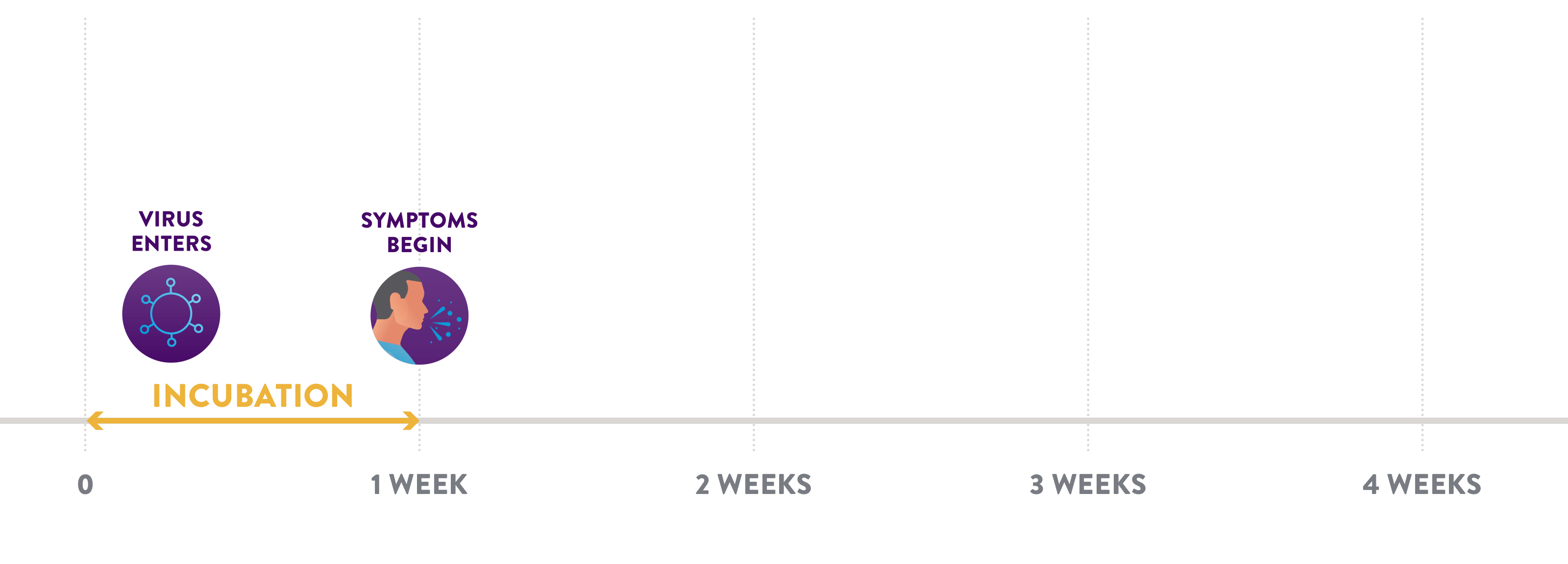
INFECTION²
Within the first couple weeks, the virus multiplies in your body and you may have symptoms of COVID-19. You are now in the infection stage.
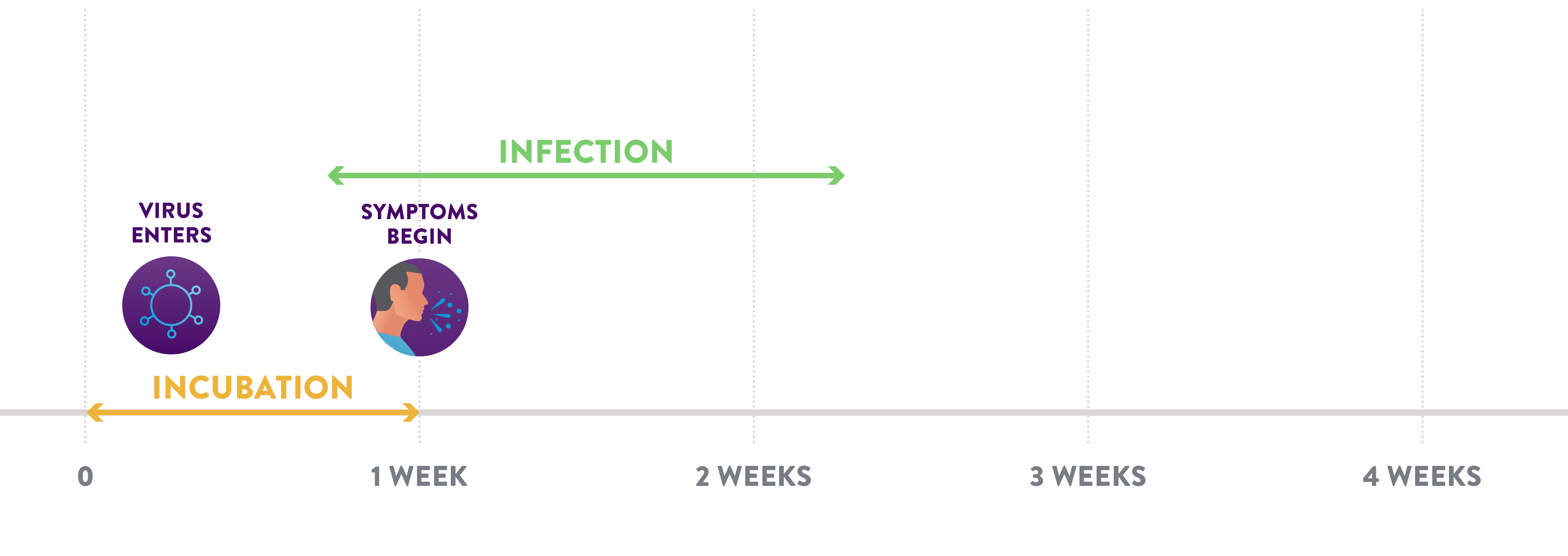
IMMUNE RESPONSE³
A couple weeks after you get COVID-19, your body enters the third phase, when it produces an immune response to fight o the virus.

MEET THE CURVES
MEET CURVE 1 VIRAL RNA²
During the first 2 weeks of you being sick, the COVID-19 virus multiplies in your body, and the RNA (ribonucleic acid) of the virus becomes detectable. Over time, the number of viruses goes down as your body fights off the infection.

MEET CURVE 2 ANTIGEN³
Antigens are proteins that are part of the virus. Since they are part of the virus, they also rise and fall along with the virus.

MEET CURVE 3 ANTIBODY³‘⁴
A couple weeks after infection begins, your body produces antibodies. Antibodies are not part of the virus. They fight the virus to help you get better.

MEET THE COVID-19 TESTS
THERE ARE THREE TYPES OF COVID-19 TESTS, ONE FOR EACH CURVE

VIRAL RNA
Detects the RNA of the COVID-19 virus
![Know the Curves Guide COVID-19 Testing[2732]-12 Know the Curves Guide COVID-19 Testing[2732]-12](https://orangecountylabs.com/wp-content/uploads/elementor/thumbs/Know-the-Curves-Guide-COVID-19-Testing2732-12-ozmqa86xdqrgujb4sot4yntsvpskrqk3ajvj5lqyvk.png)

ANTIGEN
Detects antigens of the COVID-19 virus
![Know the Curves Guide COVID-19 Testing[2732]-12.1 Know the Curves Guide COVID-19 Testing[2732]-12.1](https://orangecountylabs.com/wp-content/uploads/elementor/thumbs/Know-the-Curves-Guide-COVID-19-Testing2732-12.1-ozmqccbu5e9re8tteomka53yo6hleac2xv66ysmy88.png)

ANTIBODY
Detects antibodies created by your body

TEST 1 VIRAL RNA
To detect the COVID-19 virus, you’ll get a viral RNA test. These are often called molecular tests. Usually a swab sample is taken from your nose or throat to run this test.

TEST 2 ANTIGEN
Antigen tests are specifically designed to detect COVID-19 antigens. These tests typically use a swab sample taken from your nose or throat.

TEST 3 ANTIBODY
Antibody tests are also called immunoassay or serology tests. Antibodies are found in your blood, so this test uses a blood sample.

IT’S IMPORTANT TO GET THE RIGHT TEST AT THE RIGHT TIME.
TIME POINT A: IMMEDIATELY AFTER EXPOSURE
Imagine you were in contact with someone who has COVID-19. You might get tested right away, at time point A.
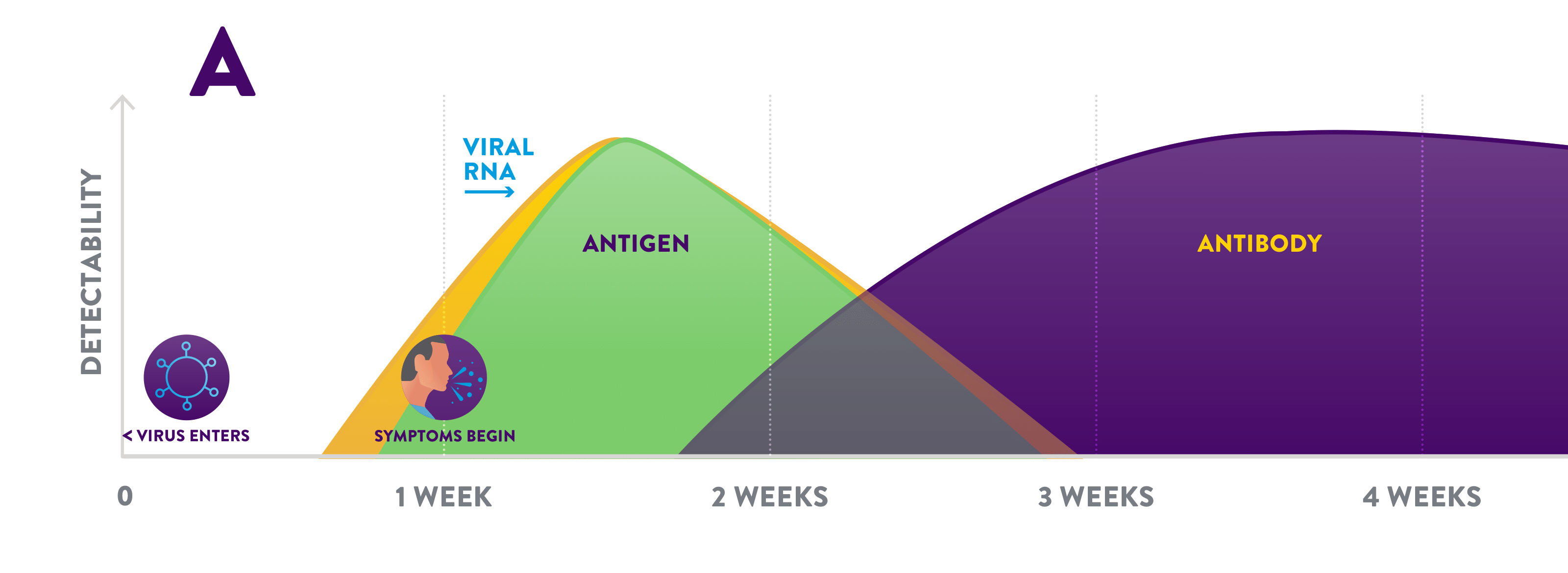
TIME POINT A: DETECTION IS UNLIKELY
At time point A, even if you have COVID-19, it is unlikely that any test will be positive, because you are in the incubation period. The virus, antigen and antibody have not yet risen enough to be detectable.

TIME POINT B: DURING INFECTION
If you test at time point B, soon after having symptoms, you will likely get a viral RNA or antigen test, as these are both now multiplying in your body.
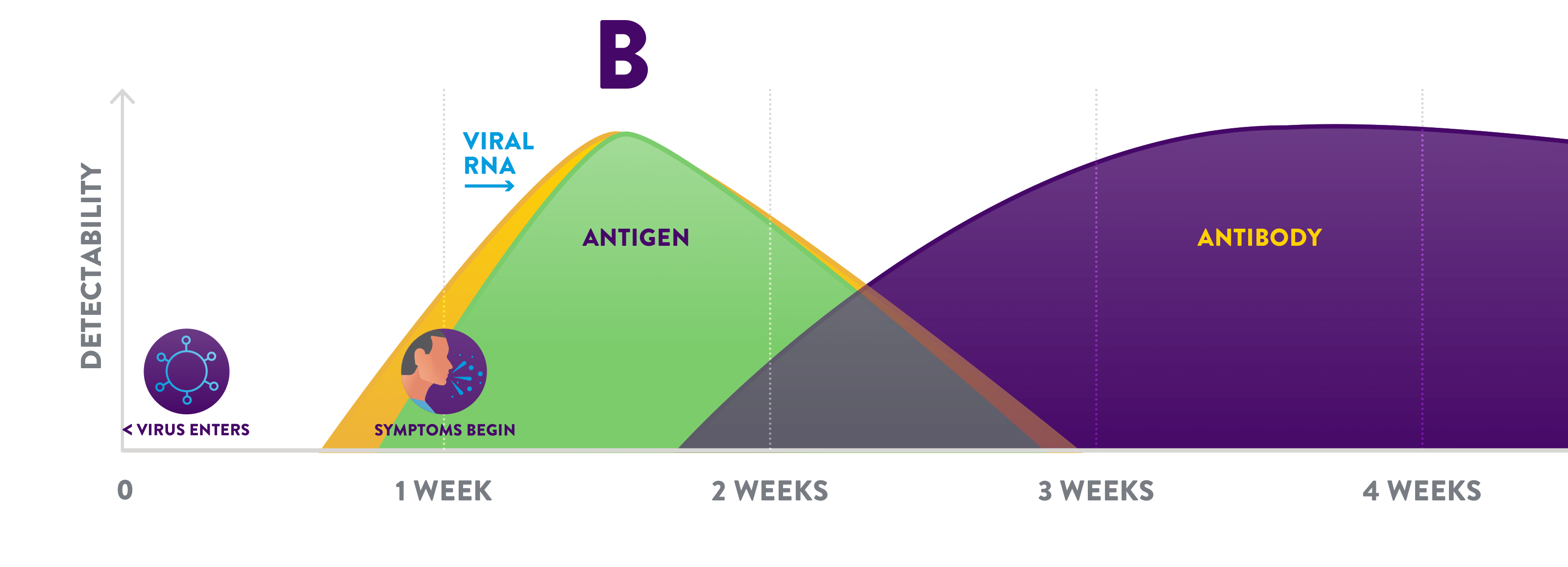
TIME POINT B: VIRUS/ANTIGEN LIKELY POSITIVE
At time point B, a viral RNA or antigen test will likely be positive. But if you get an antibody test at this time, it will likely be negative, because antibodies have not yet appeared. You may hear this called a “false negative,” because a test said you were negative when you actually have COVID-19. In this case, the antibody test was not wrong — it was just done at the wrong time.¹

TIME POINT C: IMMUNE RESPONSE PHASE
At time point C, weeks after your illness began, an antibody test is appropriate, because your body has started to create antibodies as an immune response.
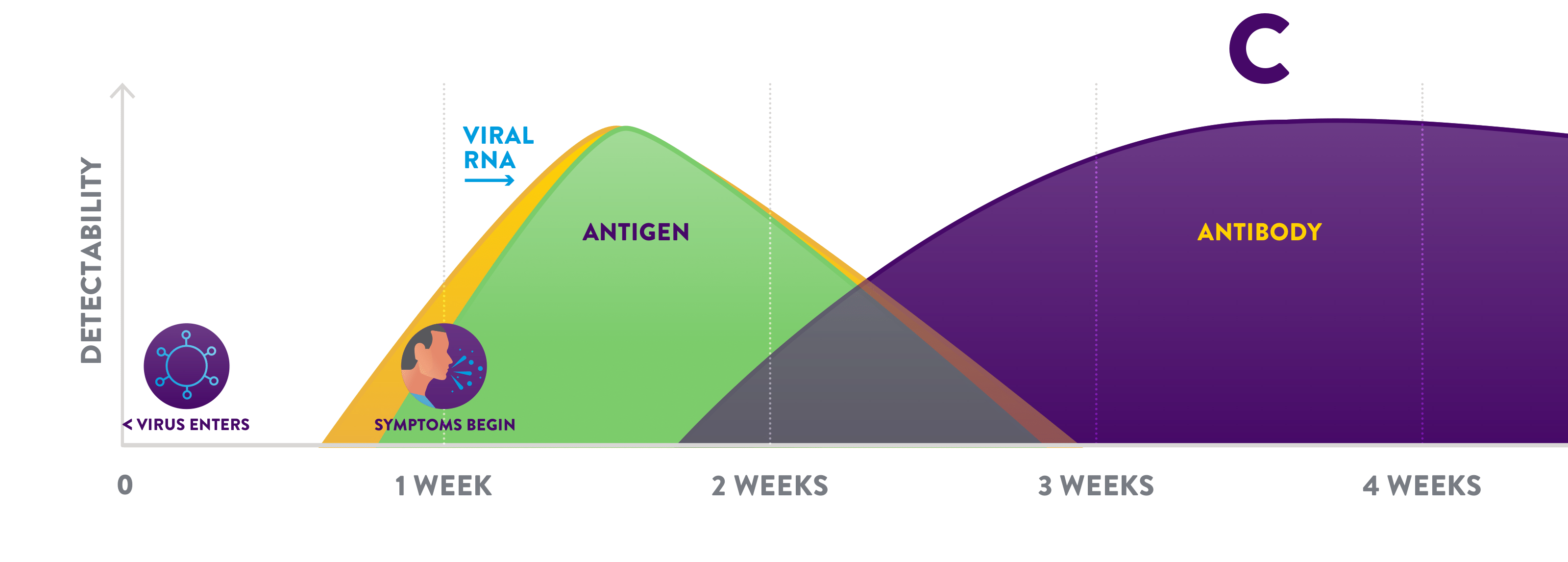
TIME POINT C: ANTIBODY LIKELY POSITIVE
At time point C, an antibody test will likely be positive, because you have lots of antibodies in your blood. But if you get a viral RNA or antigen test, it could be negative, because the levels of virus and antigen may now be too low to be detected. This might give you the false impression that you didn’t have COVID-19 when you actually did.
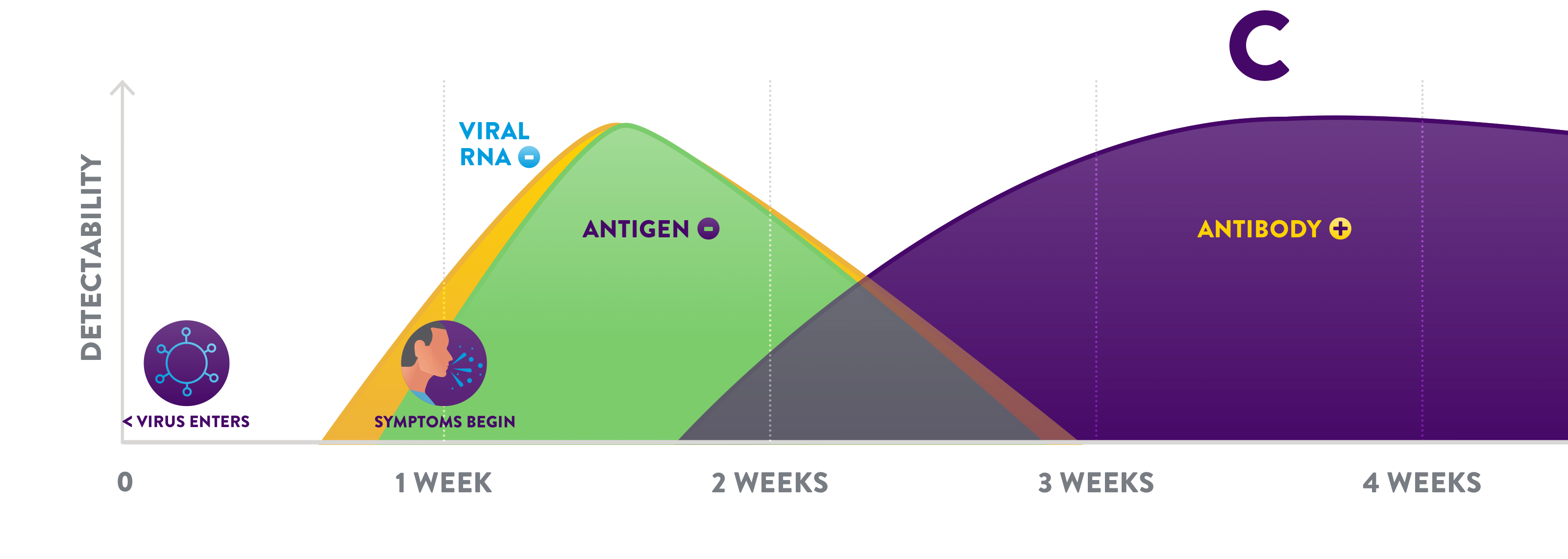
THE TIMING OF YOUR TEST IS IMPORTANT AND CAN DETERMINE WHETHER YOU GET A POSITIVE OR NEGATIVE RESULT
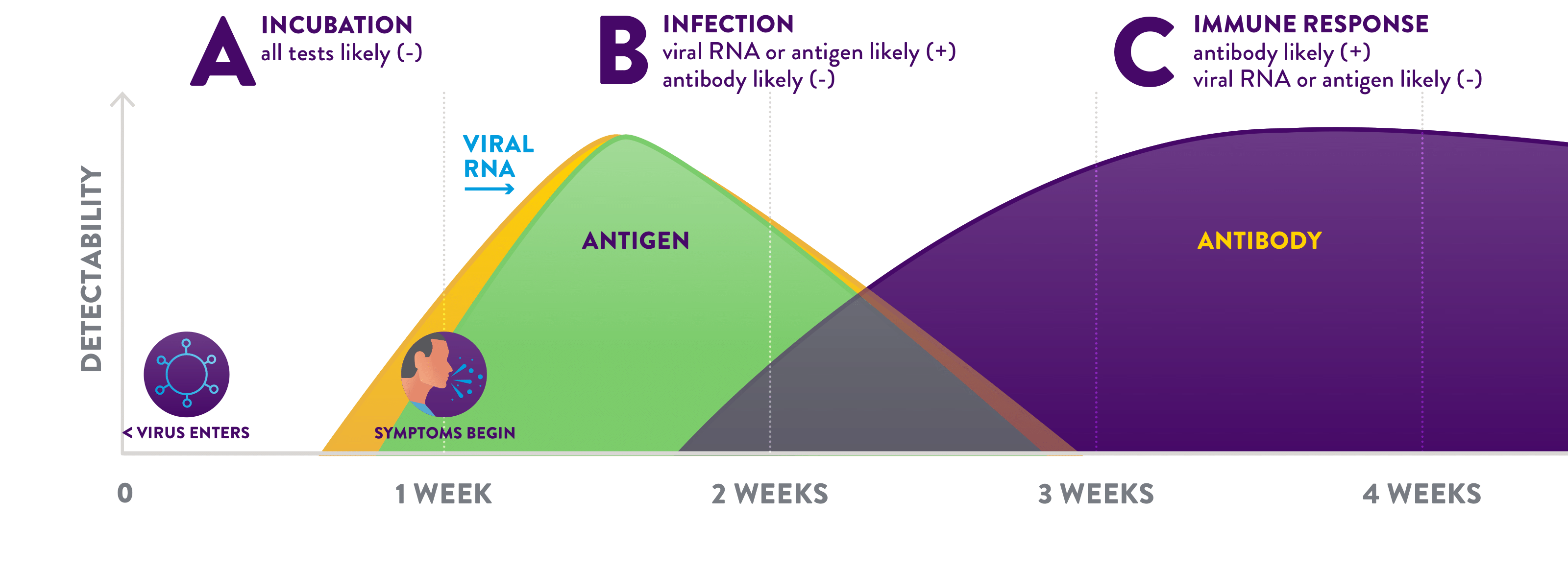
WHAT DOES A POSITIVE RESULT MEAN?
POSITIVE TESTS TELL YOU TWO IMPORTANT, BUT DIFFERENT THINGS
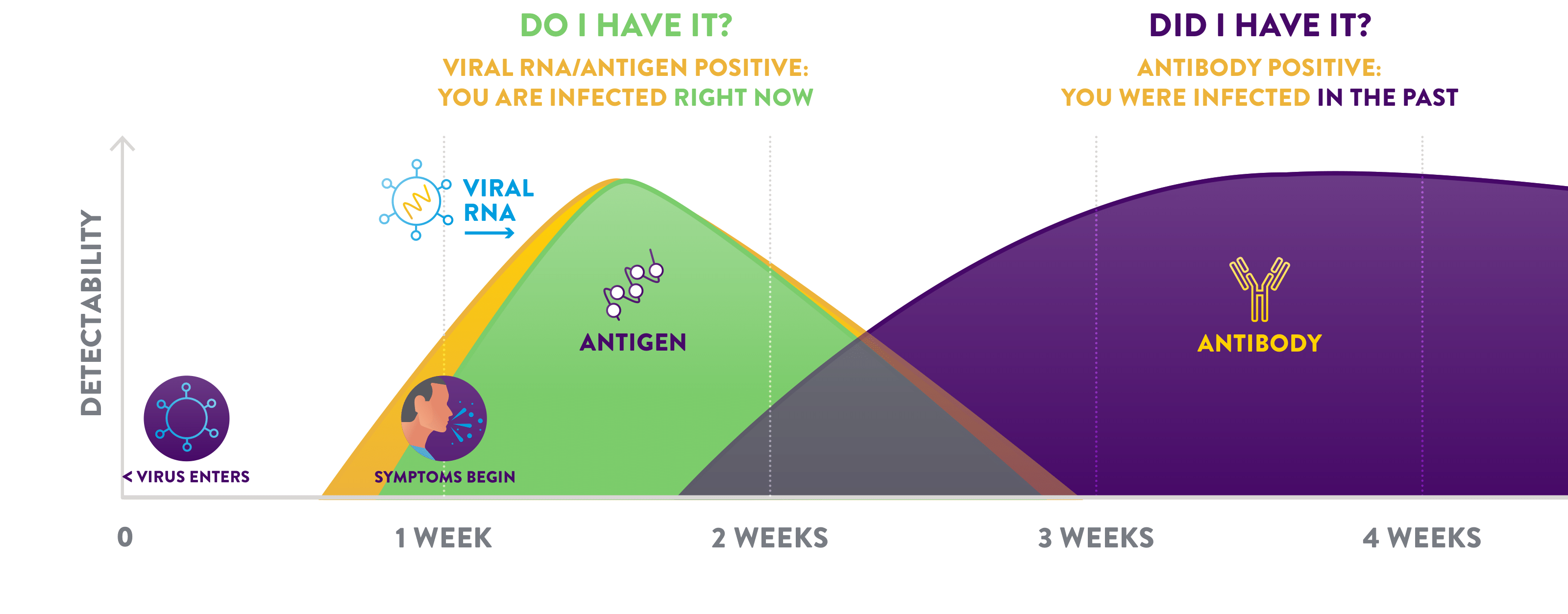
IF MY ANTIBODY TEST IS POSITIVE,AM I IMMUNE?
AM I IMMUNE?
At this time, we don’t know for sure if having antibodies makes you truly immune. We also don’t know how long that immunity might last. As more people get antibody tests, we can learn more about immunity to COVID-19.

WHEN AM I MOSTCONTAGIOUS?
CONTAGIOUS PERIOD²
You are most contagious in the infection stage, during the 10 days after your symptoms began. You can also be contagious even if you don't have symptoms. The infection is spread by the virus, not by antibodies or antigens, so you are most contagious when you have large amounts of virus in your body.
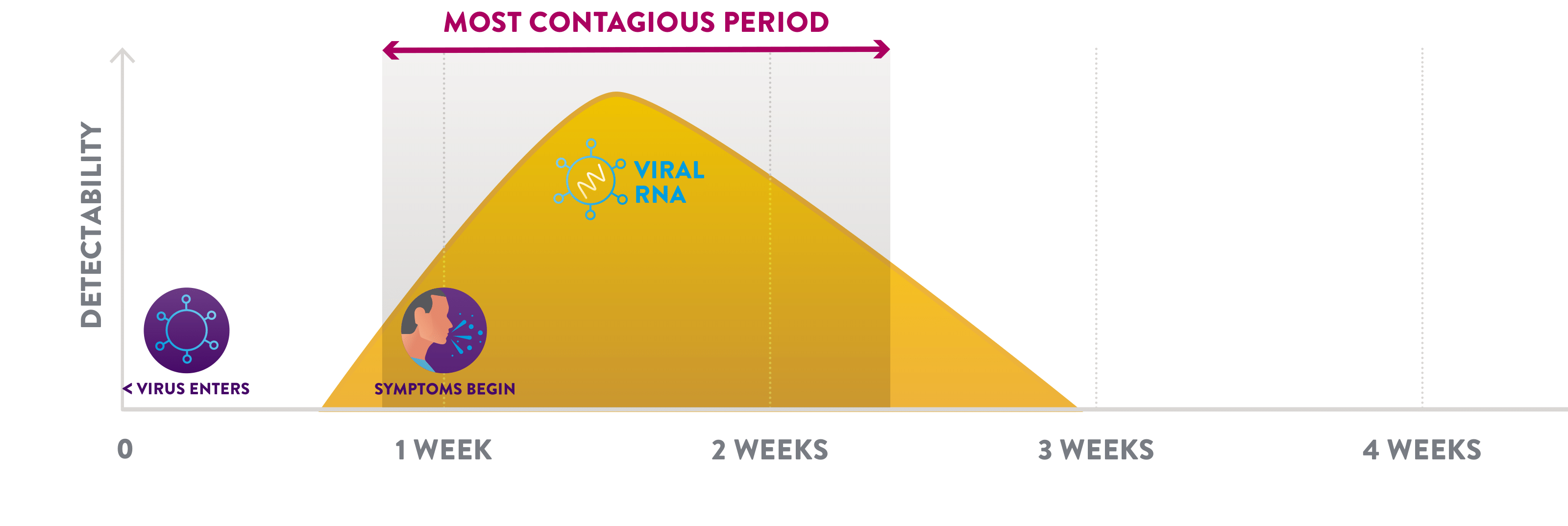
HOW CAN I GET THE RIGHT TEST AT THE RIGHT TIME IF I HAVE NO SYMPTOMS?
WHAT IF YOU HAVE NO SYMPTOMS?
If you get infected with COVID-19, you may not have any symptoms. So how do you know which test to get? You could have been infected 3 months ago, or yesterday. This is one of the most challenging aspects of diagnosing COVID-19, and one reason why some people are getting incorrect test results. They are coming in for a test, but nobody knows where they are in the curves timeline. As we have learned, it is important to get the right test at the right time, or you could get a misleading result.
IF I'M NOT IN THE CONTAGIOUSPERIOD, OR MY TESTSHOWS THAT I DON'T HAVE COVID-19, DO I STILL NEED TO WEAR A MASK?
Whether your test is positive or negative, and even if you are not in the contagious period, you should still wear a mask, practice social distancing, and wash your hands to help stop the spread of COVID-19.
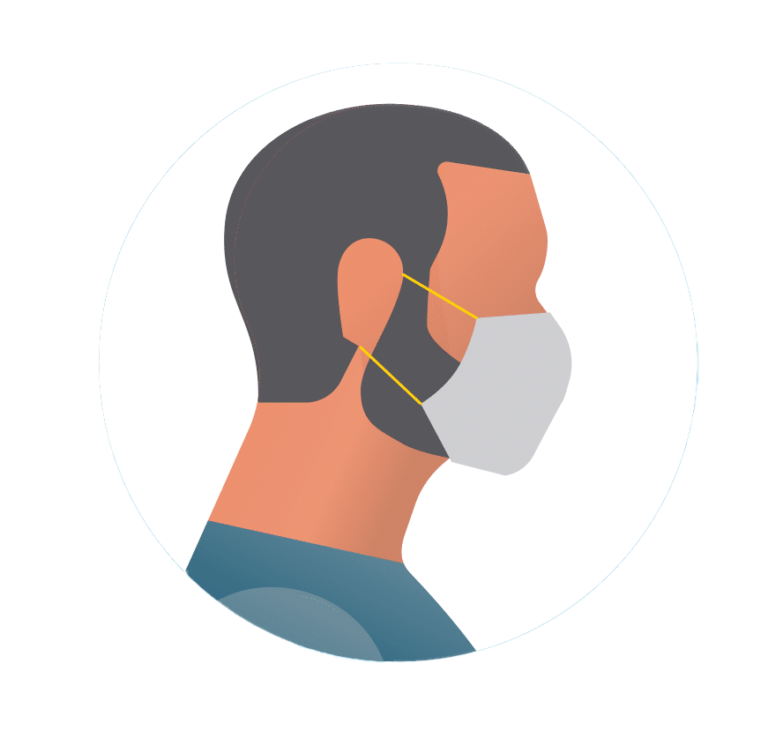
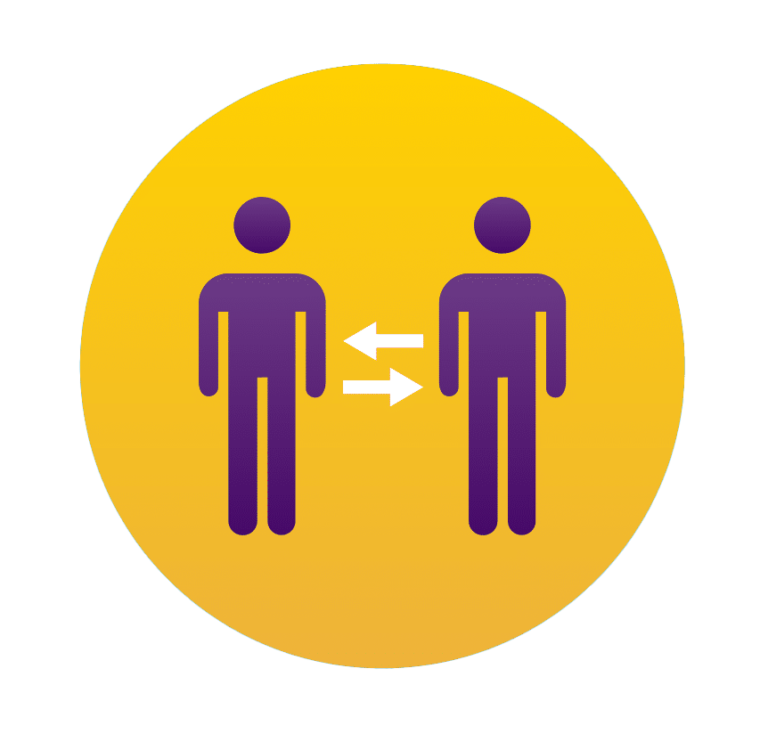
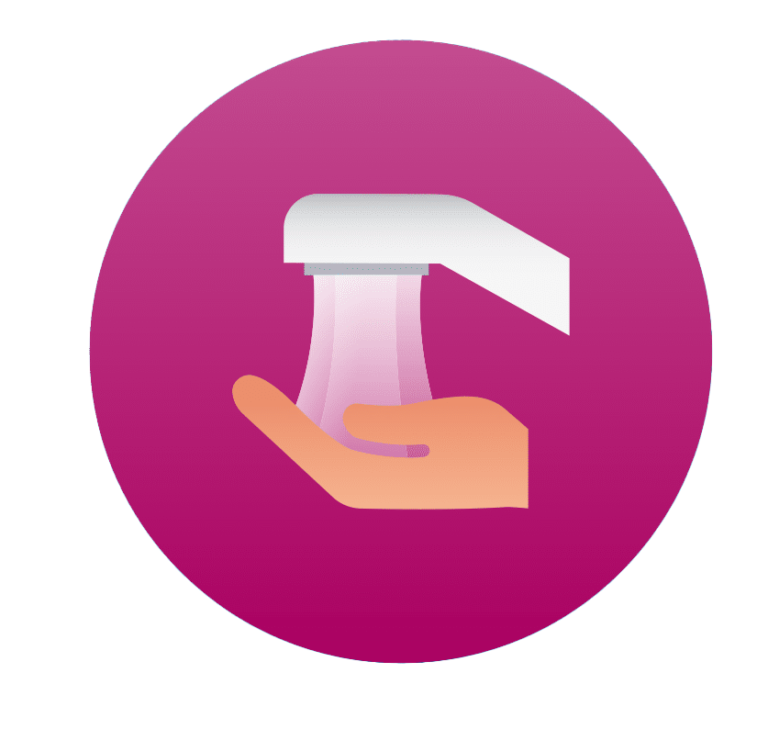
WHAT INFORMATION SHOULD I PROVIDE TO MY DOCTOR?
IMPORTANT DATES TO TELL YOUR DOCTOR
A test is only one part of getting a correct diagnosis. No test is 100% correct all the time, and as we’ve seen, the timing of the test also matters. Two dates can help your doctor:
1. THE DAY YOU THINK YOU WERE EXPOSED TO COVID-19 2. THE DAY YOU FIRST STARTED HAVING SYMPTOMS
Together with your health history and symptoms, these dates help your doctor know which type of test you need.
IS IT THE COMMON COLD, THE FLU OR COVID-19?
WHICH DISEASE DO I HAVE?
If you get infected with COVID-19, you may not have any symptoms. So how do you know which test to get? You could have been infected 3 months ago, or yesterday. This is one of the most challenging aspects of diagnosing COVID-19, and one reason why some people are getting incorrect test results. They are coming in for a test, but nobody knows where they are in the curves timeline. As we have learned, it is important to get the right test at the right time, or you could get a misleading result.
